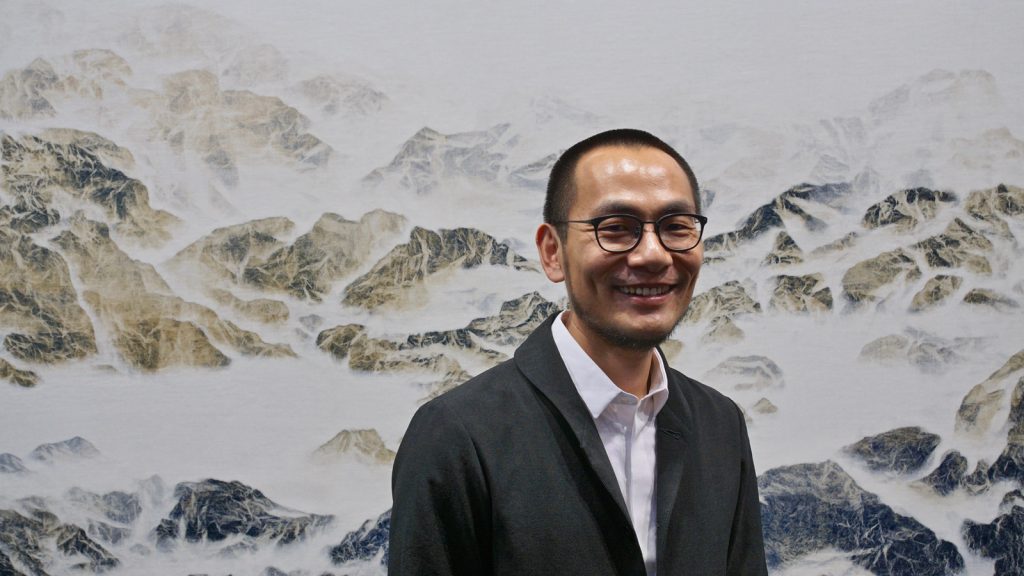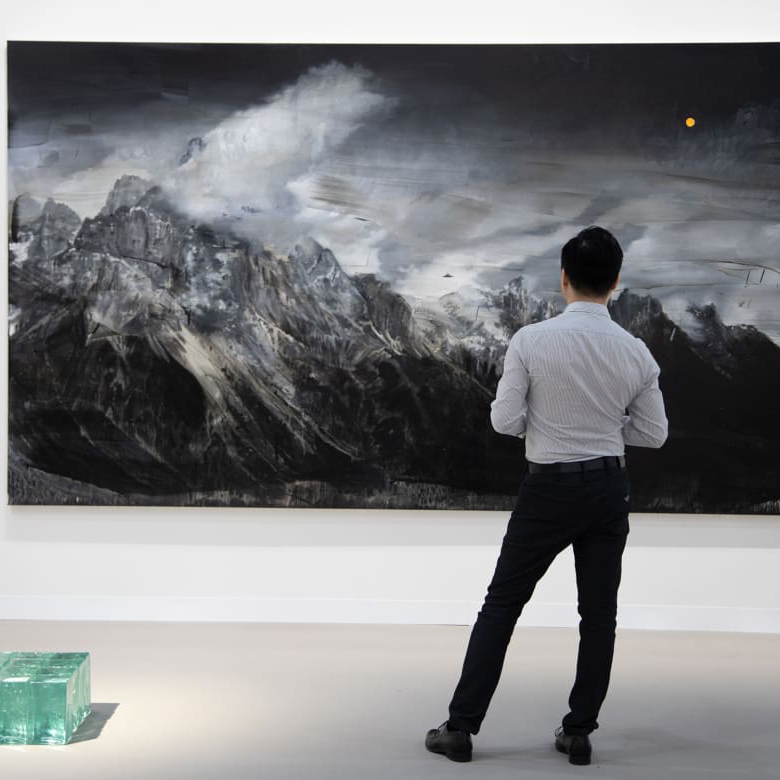Art Basel Hong Kong 2018: Wu Chi-Tsung at Galerie du Monde
A solo exhibition comprised of nature-invoking cyano-collage photography and wire sculptures

by Alessandro De Toni
Taipei-based artist Wu Chi-Tsung is currently showing in a solo exhibition hosted by Galerie Du Monde at Art Basel Hong Kong. Through his career, his body of work has spanned from painting to video, photography and installation art, and although his language is exquisitely contemporary, in his works there are echoes of classical Chinese painting. At this exhibition, however, the audience can admire his cyano-collage photography series and the latest chapter of his installation, called “Wire V.”

As Wu explains to us, the cyano-collage series is inspired by an ancient texturing technique often used in Chinese landscape painting (shanshui). The method involves covering rice paper in a photosensitive solution before crumbling it, all while it’s exposed to direct sunlight. This creates an effect of light and shadow on the paper. Then, cyanotype and plain rice-paper are added in multiple irregular layers to create the collage.

“In the past, shanshui paintings were developed within the framework of traditional painting skills of brush and ink,” Wu says, “But after the Yuan dynasty, the exploration of this method and technique became more prominent than the mere observation of nature. By reinterpreting this trend, I turned shanshui into experimental photography.” The process can last over three months per painting, and the final results are essentially experimental photography montages that reinterpret the concept of Chinese landscape work. The shades of blue and yellow resemble mountain ranges and tumultuous blue seas.
In a small room in Galerie du Monde’s booth, another mesmerizingly beautiful work brings the viewer to a new interpretation of shanshui landscapes. “Wire V” incorporates a series of artworks that were started back in 2003 that explore how images change the way we imagine the outside world. Based on the structure of the magic lantern, a mechanically controlled lens repeatedly adjusts the focal length to transform a regular piece of wire mesh into a moving image, projecting on the wall a dynamic Chinese landscape.

As Wu notes, “My focus is on how our way of observing things is changing. The resolution of the cameras we use are increasingly high—2K, 4K, even 8K—we’re continuously pushing forward and the more we increase the level of details the more it feels fake, and it seems that when we push the limits of our observation, reality shifts into something else. The contradiction between observation and sense of reality is typical of society nowadays, in the pursuit of reality we seem to move far and farther away from it.”
The cold industrial-looking equipment and the fiber of the wire mesh contrast with the warmth of the projected images. As in the brush strokes of ancient paintings, the wrinkles of the wire mesh leave a trace of a human touch, where the boundaries between nature and the representation of inner feelings seem to melt into one single thing. Together, Wu’s works carries forward tradition—and turn it on its head for everyone to experience.
Second and “Wire V” image courtesy of artist, all other images by Alessandro De Toni












